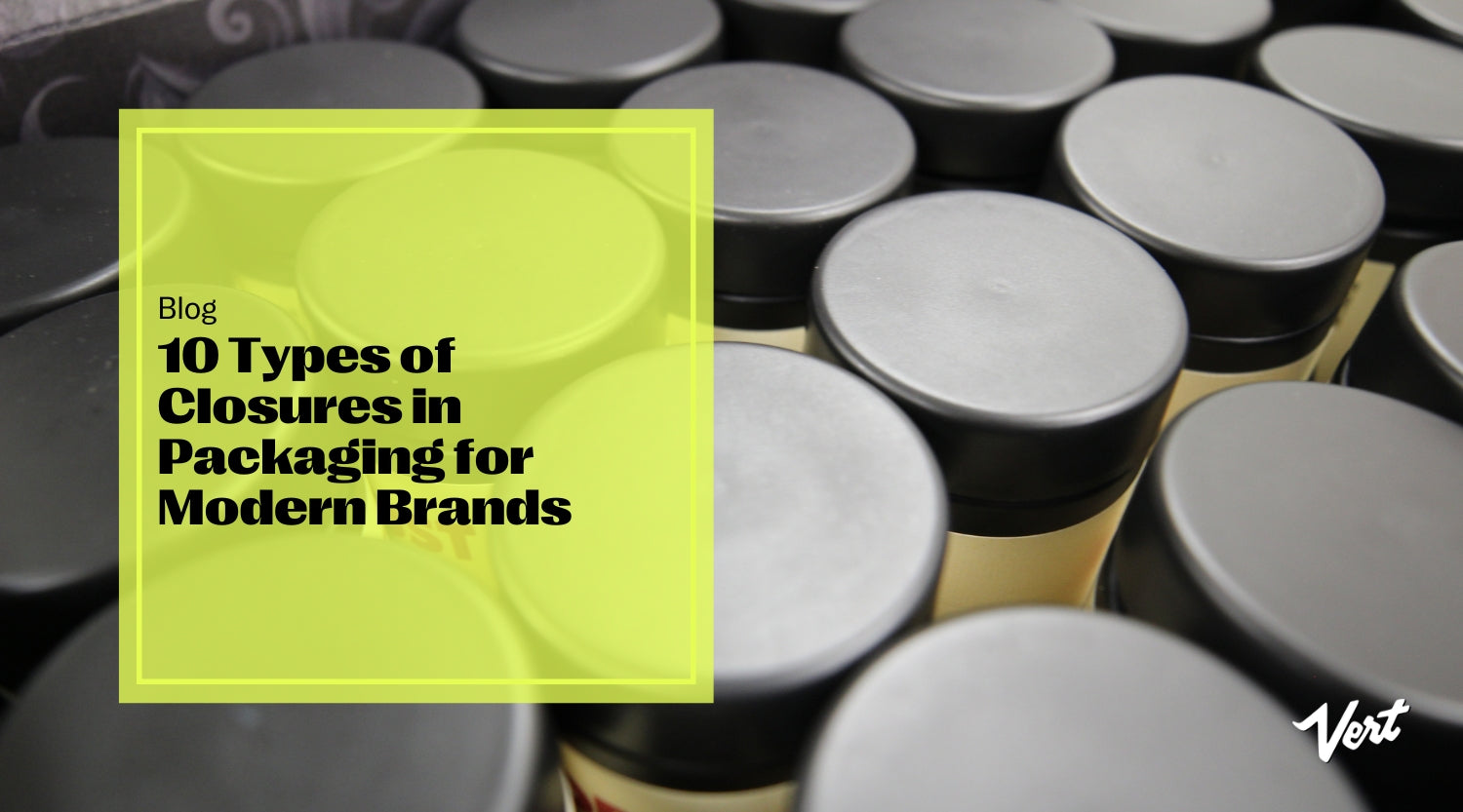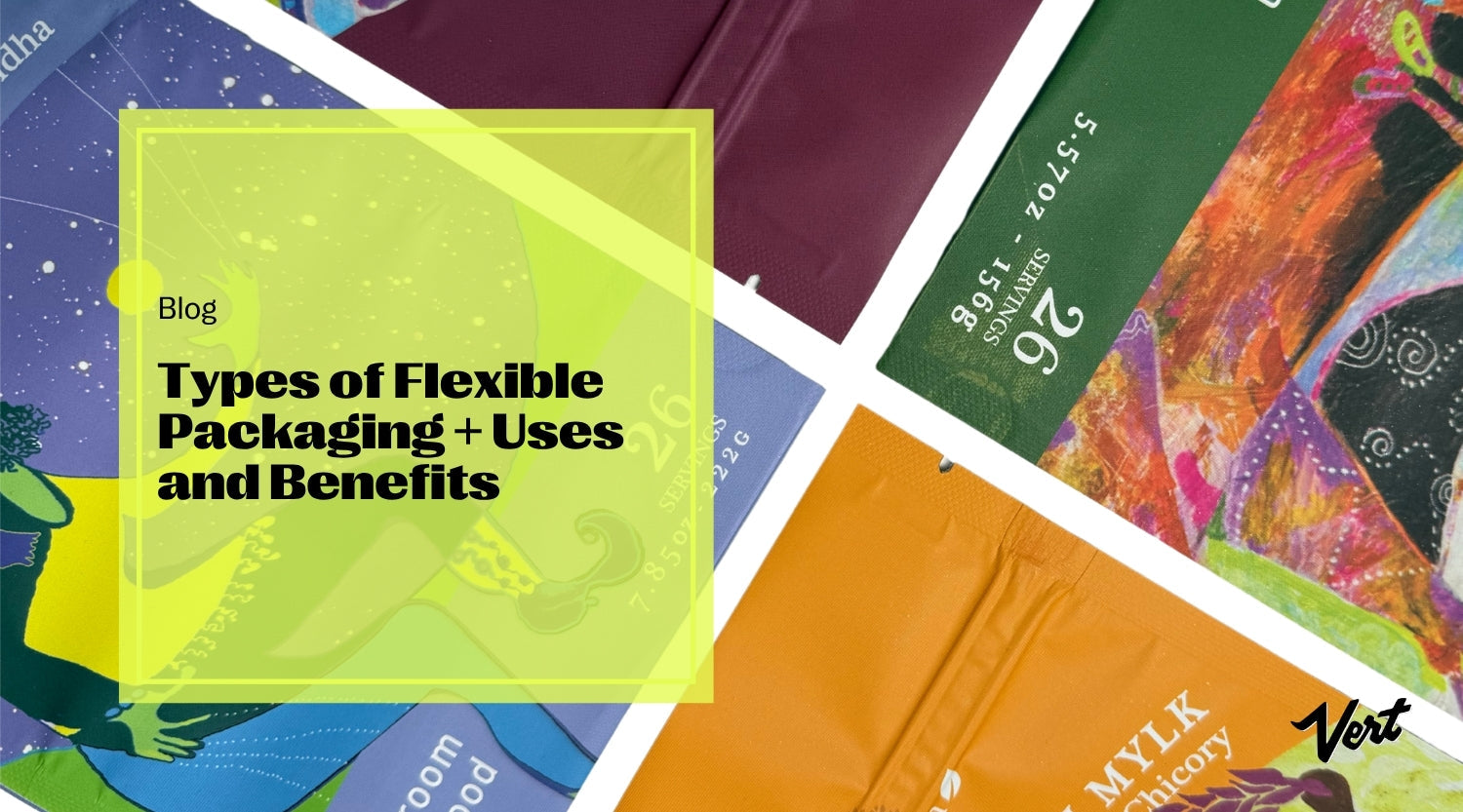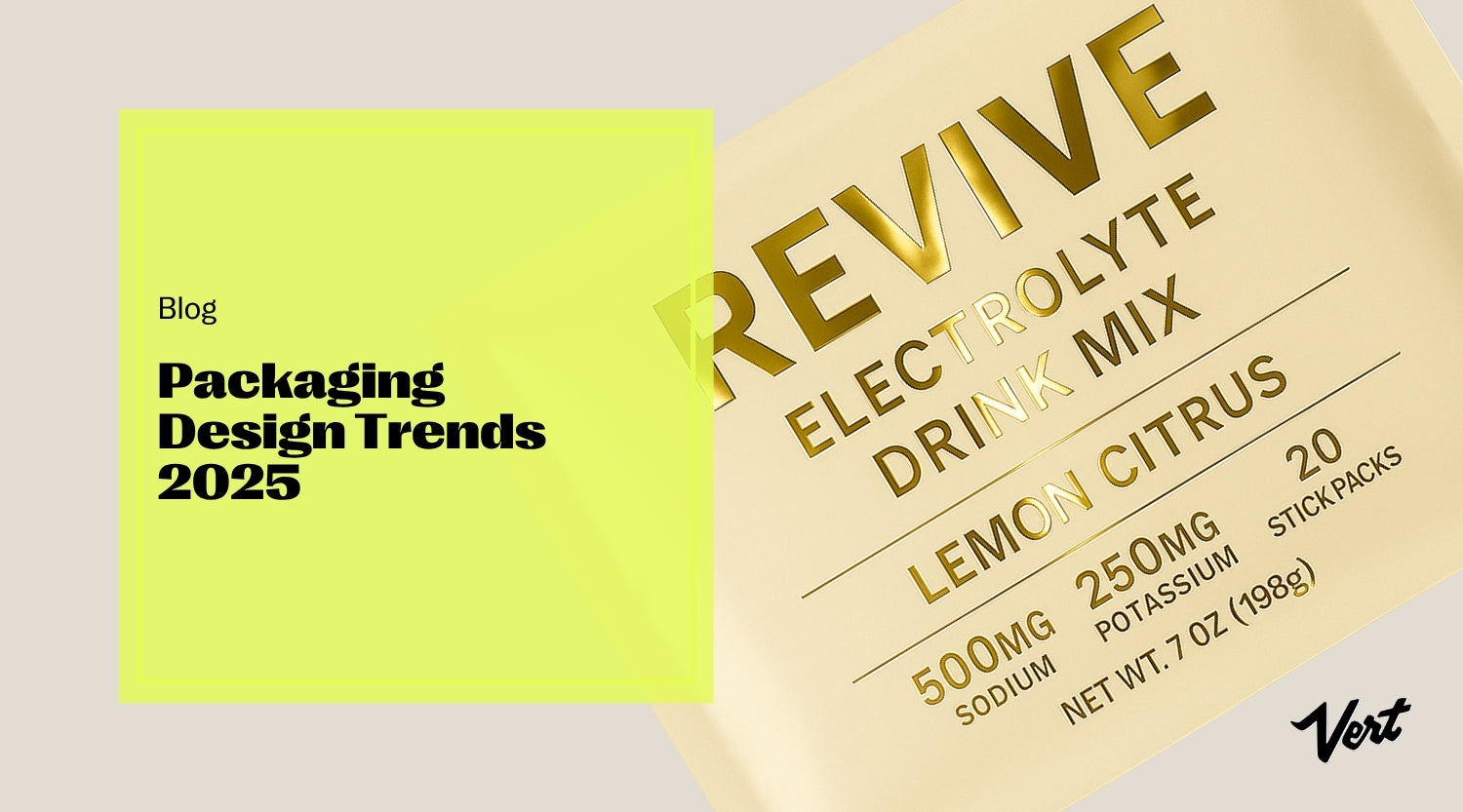Packaging closures offer better security, usability, and shelf appeal for today’s brands.
Choosing the right closure is a strategic decision. It affects freshness, safety, convenience, and your product’s shelf appeal. Different industries have different needs. A sports nutrition brand wants quick access and a spill-proof design. A natural products company needs eco-friendly materials and tamper evidence. Pet food brands focus on durability and freshness.
Understanding closure types helps brands make smart choices. Brands need to balance function, cost, and consumer expectations.
1. Screw-On Caps
Screw-on caps are the most widely used closure type in the packaging industry.
Screw-on caps are everywhere. They fit bottles, jars, and pouch packaging across food, beverage, supplements, and personal care. These caps use threads inside the cap and on the container neck. Turning the cap creates a tight seal. This simple action keeps products secure.

Screw-on caps come in many forms. Some offer tamper evidence. Others add child resistance. Wide-mouth versions make filling and scooping easy. For example, protein powder jars use wide-mouth screw caps. Supplement bottles use tamper-evident versions. Essential oils often need child-resistant screw caps.
These caps are reliable and cost-effective. They are easy for adults to use. They also travel well and prevent leaks. Brands use colors, textures, and embossing to make closures stand out. These small touches help create a look that feels personal and distinct.
2. Snap-On Lids
Snap-on lids provide convenient access for products used frequently.
Snap-on lids offer simplicity. They press onto the container rim and snap into place. No twisting is needed. This makes them perfect for products people use often.

Snap-on lids come in many styles. Flip-top snap lids allow one-handed opening. These are popular for sports drinks and on-the-go snacks. Tamper-evident snap lids have a band that breaks the first time the lid is opened. This is great because it reassures customers about product safety.
Press-to-close lids need a firm push to lock. They’re common for sample jars and travel sizes. Snap-on lids are easy to use and quick to reseal. They work well for dry foods, snacks, and more.
3. Twist-Off Closures
Twist-off closures are designed for easy opening and resealing, making them user-friendly.

Twist-off closures are designed for easy, repeated use. They are common on jars and some bottles. A simple twist opens or reseals the container. The design reduces the force needed to open.
4. Vacuum-sealed twist-off lids
Vacuum-sealed twist-off lids keep foods fresh.
With POP-VAC jars, for example, the vacuum seal pops when first opened. This indicates that the product is fresh. Reclosable twist-off lids allow multiple uses without losing their seal. Metal twist-off caps provide extra protection from light, air, and moisture.

These closures are ideal for jams, sauces, pet foods, and more. They balance convenience with product protection.
5. Flip-Top Caps
Flip-top caps offer secure sealing.
Flip-top caps combine security with speed. They stay attached to the container, so there’s no cap to lose. Flip the top open with your thumb and pour or squeeze.

Spring-loaded flip-tops snap shut automatically. This reduces spills and any potential contamination. Silicone valve flip-tops are leak-proof. Tamper-evident versions show if the product has been opened.
Flip-top caps are popular for sports drinks, condiments, and more. They support active lifestyles and on-the-go use.
6. Dropper Assemblies
Dropper assemblies offer precise dosing for products that require accuracy.
A dropper combines a squeezable bulb and a pipette. Squeeze the bulb, draw up the liquid, and release it drop by drop.

Calibrated droppers are helpful since they include droppers that have measurement marks. This helps users measure the right amount every time. Tamper-evident droppers also show if the product has been opened. Child-resistant droppers add an extra layer of safety for products with active ingredients.
Droppers are common for essential oils, tinctures, and serums. They offer control and accuracy. This builds trust with consumers who want reliable dosing.
7. Pump Dispensers
Pump dispensers deliver measured doses and are great for preventing contamination.
Pump dispensers are all about control and cleanliness. They deliver measured doses of liquid or cream products. Pressing the pump draws the product up and out. This keeps the rest of the contents untouched and free from contamination.

Airless pumps are popular in skincare. They prevent air from entering the container. This protects sensitive ingredients and extends shelf life. Metered pumps deliver a set amount with each press. This is useful for supplements and hand sanitizers.
Foam pumps mix air with liquid to create foam. They are common in soaps and cleaning products. Pump dispensers are easy to use and reduce waste. They also add a modern, high-quality feel.
8. Induction Seal Liners
Induction seal liners provide tamper evidence and strong product protection.
A thin foil liner is placed inside the cap. When the cap is applied, electromagnetic energy heats the foil. This process bonds the foil securely to the container rim.

Foil induction seals block moisture as well as oxygen and contaminants. This keeps powders and dried herbs fresh. Pulp-backed seals add easy removal. Pressure-sensitive induction seals work without heat. This is ideal for temperature-sensitive products.
Induction seals reassure customers that the product is safe. They are common in supplements, food, and pharmaceuticals.
9. Child-Resistant Closures
Child-resistant closures help keep kids safe by making it harder for them to open certain products.
These closures are essential for products that could be harmful if swallowed. They use special mechanisms to prevent children from opening them while still allowing adults to access the contents.
Push-and-turn caps require two actions at once. Squeeze-and-turn closures add another layer of difficulty. Locking tab closures need the user to press a tab before opening.

These closures are required for many essential oils, supplements, and cleaning products. Child-resistant pouches can also be used for adult-only products like cannabis. They help brands comply with safety laws and protect families. Child-resistant packaging must meet strict ASTM standards and comply with the Poison Prevention Packaging Act for products that could be harmful to children, including hazardous substances, fuel, and certain foods, drugs, and cosmetics.
Some Mylar bags also feature child-resistant zippers to meet safety regulations in cannabis and supplement packaging.
10. Cork Closures
Cork closures are chosen for their premium appeal.
These closures bring tradition and a touch of luxury. They are made from natural cork or synthetic materials. Cork expands to fit tightly in the neck of a bottle or jar. This creates a secure, airtight seal.

Natural cork is popular for wine. It is also often used for artisanal oils and vinegars. It allows a small amount of air exchange. This can benefit certain products.
Synthetic cork offers a consistent seal and is less affected by humidity or temperature. Micro-agglomerated cork blends cork particles with food-safe binders for extra strength.
Cork closures signal quality. They appeal to eco-conscious consumers. They are also biodegradable and renewable. Brands use cork to highlight natural ingredients and premium positioning.
Specialty Closure Materials
Specialty materials offer unique benefits and reinforce a brand’s values.
The material choice affects performance and safety. It also impacts the brand image. Biodegradable closures break down after use. They appeal to eco-conscious shoppers and support sustainability goals.
Antimicrobial closures resist bacterial growth. They are used in healthcare and personal care products. Barrier-enhanced closures combine materials to block gases as well as moisture. This is great because it extends the shelf life of sensitive products.
Brands should choose materials that match their values and product needs. The right material surely sets a product apart on the shelf.
Closure Selection Considerations
Selecting the right closure means balancing product needs and regulatory requirements. It also needs to align with your brand goals.
Product compatibility when choosing a closure is critical. For example, essential oils need closures that resist chemical migration.
Regulatory compliance is non-negotiable. Different markets have different rules. Child-resistant and tamper-evident features may be required. Material safety standards must be met for products like food and pet products.
Brand differentiation matters. A unique closure design makes your product stand out. Custom colors, shapes, and finishes create a memorable experience.
Cost is always a factor. Higher-performance closures may cost more, but they justify a premium price. The right balance supports your business goals.
Regulatory Requirements and Compliance
Regulations play a key role in closure selection.
Regulations shape closure choices. Safety standards vary by product type and country. Child-resistant packaging must pass strict tests. Tamper-evident features are mandatory for many over-the-counter medicines and some foods.
Material safety is closely regulated. Closures must not leach harmful substances into the product. This is especially important for food, pet products, and anything ingested or applied to the skin.
Environmental laws are changing fast. More regions require recyclable or biodegradable packaging. Brands must stay up-to-date or risk losing market access.
Choosing the Right Closure for Your Business Needs
The right closure choice is a small detail that delivers a big impact.
Packaging closures are more than functional components. They shape how consumers interact with your product every day. The right closure makes opening and storing your products simple. It also protects your brand’s reputation by ensuring safety, freshness, and compliance.
Today’s market rewards brands that pay attention to these details. Customers notice closures that are easy to use and safe for their families. They remember packaging that stands out for its reliable performance.
It’s important to stay informed about new closure technologies and regulatory changes. Work closely with packaging experts to test your options. Listen to customer feedback. It’s also important to watch for emerging trends that are compatible with your brand’s mission.
Your closure choice is a direct extension of your brand promise. It shows you care about quality and your customers' experience. The right closure builds trust with every use. That trust will keep customers coming back. It also sets your brand apart in a crowded marketplace.



Leave a comment
This site is protected by hCaptcha and the hCaptcha Privacy Policy and Terms of Service apply.